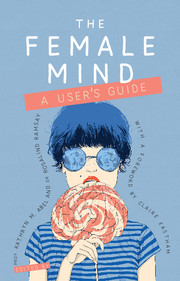Book contents
- Frontmatter
- Acknowledgements
- Contents
- Foreword
- Introduction: being female
- Part I Women in perspective
- Part II Women and society
- Part III Women and their environment
- Part IV Women and specific disorders
- 18 Depression and other mood disorders
- 19 Anxiety disorders
- 20 Trauma and post-traumatic stress disorder
- 21 The dangers of rumination
- 22 Obsessive–compulsive disorder
- 23 Eating disorders and body dysmorphic disorder
- 24 Psychosexual disorders
- 25 Personality disorders: risks and recovery
- 26 Self-harm
- 27 Women and addiction
- 28 Autism spectrum disorder
- 29 Attention-deficit hyperactivity disorder
- 30 Psychotic illness
- 31 Postnatal depression and postpartum psychosis
- 32 Living longer: normal age-related changes, dementia and depression
- Part V Women and treatment
- Contributors
- Index
28 - Autism spectrum disorder
from Part IV - Women and specific disorders
Published online by Cambridge University Press: 02 January 2018
- Frontmatter
- Acknowledgements
- Contents
- Foreword
- Introduction: being female
- Part I Women in perspective
- Part II Women and society
- Part III Women and their environment
- Part IV Women and specific disorders
- 18 Depression and other mood disorders
- 19 Anxiety disorders
- 20 Trauma and post-traumatic stress disorder
- 21 The dangers of rumination
- 22 Obsessive–compulsive disorder
- 23 Eating disorders and body dysmorphic disorder
- 24 Psychosexual disorders
- 25 Personality disorders: risks and recovery
- 26 Self-harm
- 27 Women and addiction
- 28 Autism spectrum disorder
- 29 Attention-deficit hyperactivity disorder
- 30 Psychotic illness
- 31 Postnatal depression and postpartum psychosis
- 32 Living longer: normal age-related changes, dementia and depression
- Part V Women and treatment
- Contributors
- Index
Summary
Autism spectrum disorder (ASD) is a neurodevelopmental disorder – a disorder of ‘wiring’. This means people with ASD process information in a way that is different from the ‘neurotypical’ population. Currently, internationally agreed criteria define ASD as a developmental disorder with difficulties in two key domains:
• difficulties in social communication and reciprocal social interactions
• difficulties in social imagination and restricted, repetitive and stereotyped behaviours and interests, along with sensory sensitivities.
ASD is a broad disorder within a broader-still group of disorders known as the pervasive developmental disorders. In recent years, professionals, affected families and the general public have become aware that there is a range of ASD disorders and that affected individuals can be at any point ‘on a spectrum’. Our understanding of the nature of the difficulties that affected people have is always evolving. Classification and guidelines for clinical judgement continue to develop and change.
For some people, their difficulties related to autism are clear for others to see – they stand out. For others, their outward difficulties may be much more subtle, even if the impact is still enormous. The definition of ASD has broadened and, without doubt, this has led to some loss of clarity.
Women with ASD have historically been underdiagnosed, particularly those who manage to function well. Concern has been growing that girls and women with ASD might be overlooked within the new frameworks.
Different presentations in women
ASD often presents differently in women and men. This can result in delays in diagnosis of women, as their symptoms are not considered ‘typical’. There is increasing evidence that the assessment tools used for diagnosis are inherently biased towards the signs and symptoms men tend to show. William Mandy and David Skuse have explored this in some detail. In 2015, they joined to present a webinar on the current understanding of gender differences in ‘the female autism conundrum’.
Women with ASD might have developed better superficial social skills than men and this can mask the level of social deficit, unless a doctor digs deeper. Many high-functioning women and girls with ASD are never referred for assessment, and therefore never diagnosed, even though they are equally in need of treatment and support.
- Type
- Chapter
- Information
- The Female MindUser's Guide, pp. 183 - 187Publisher: Royal College of PsychiatristsPrint publication year: 2017

